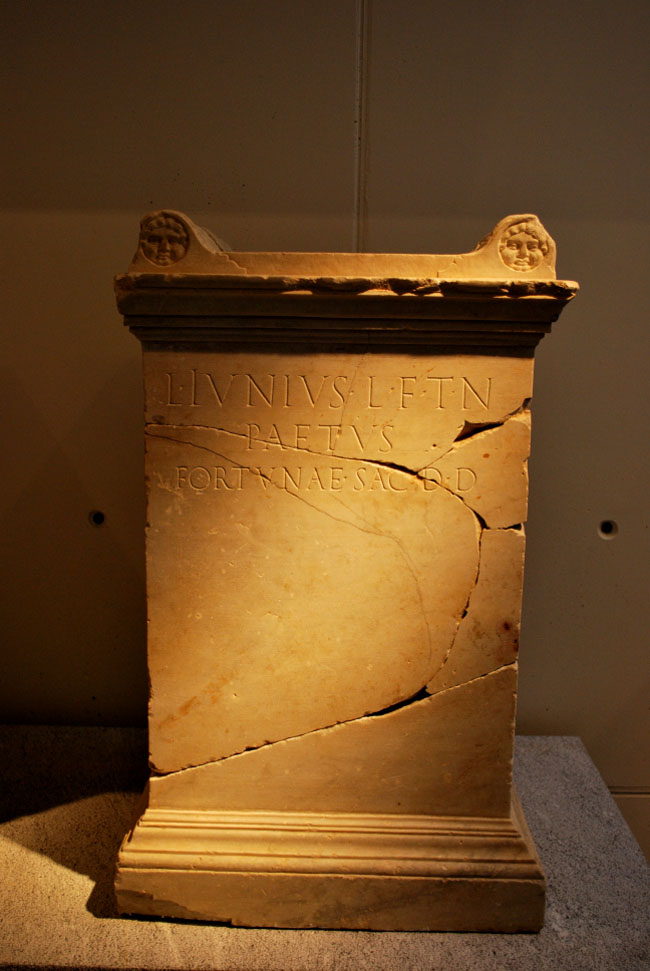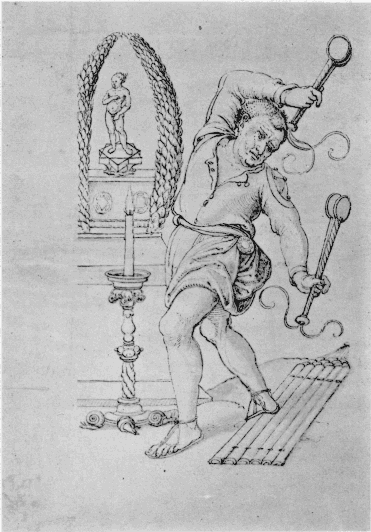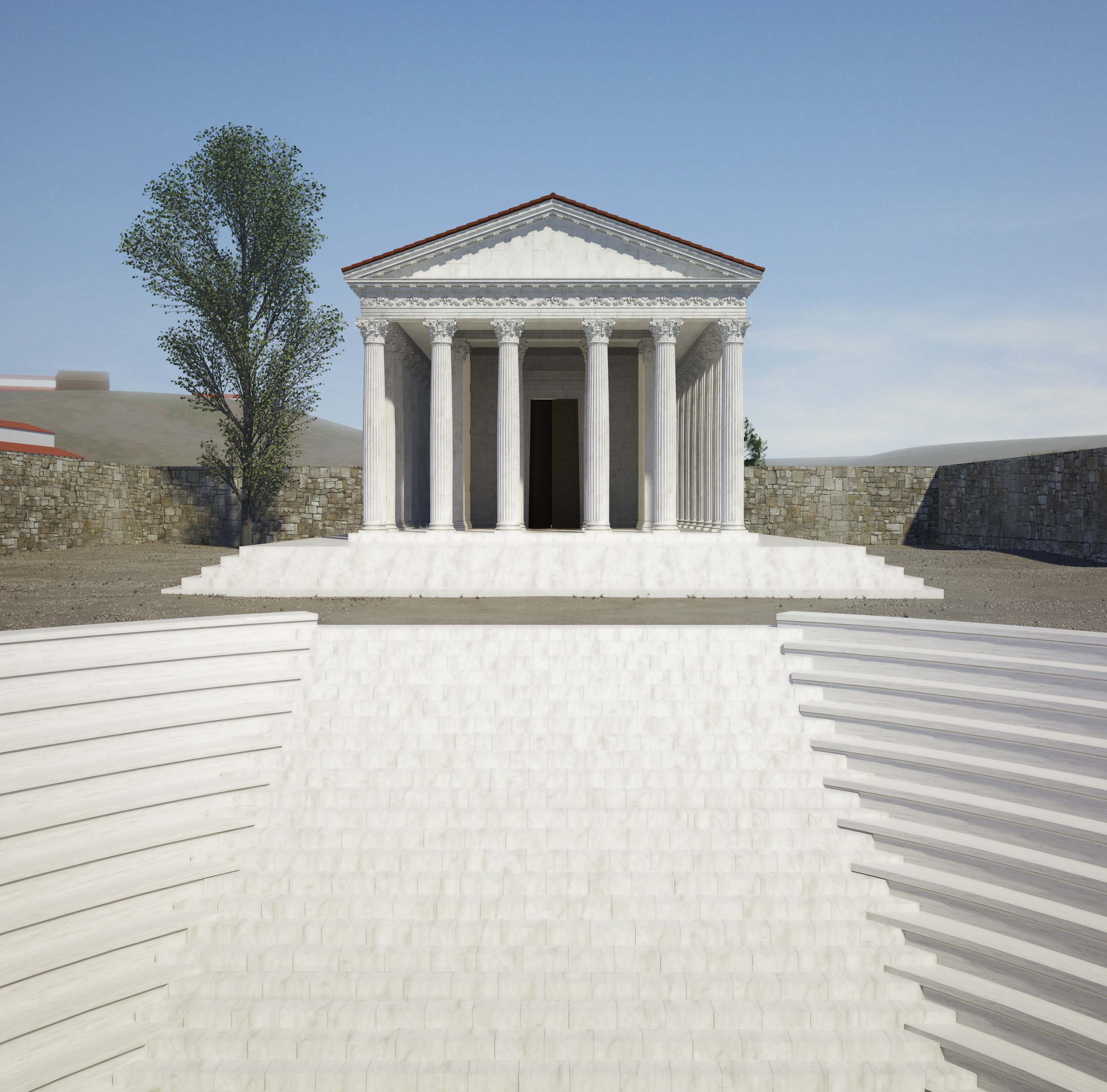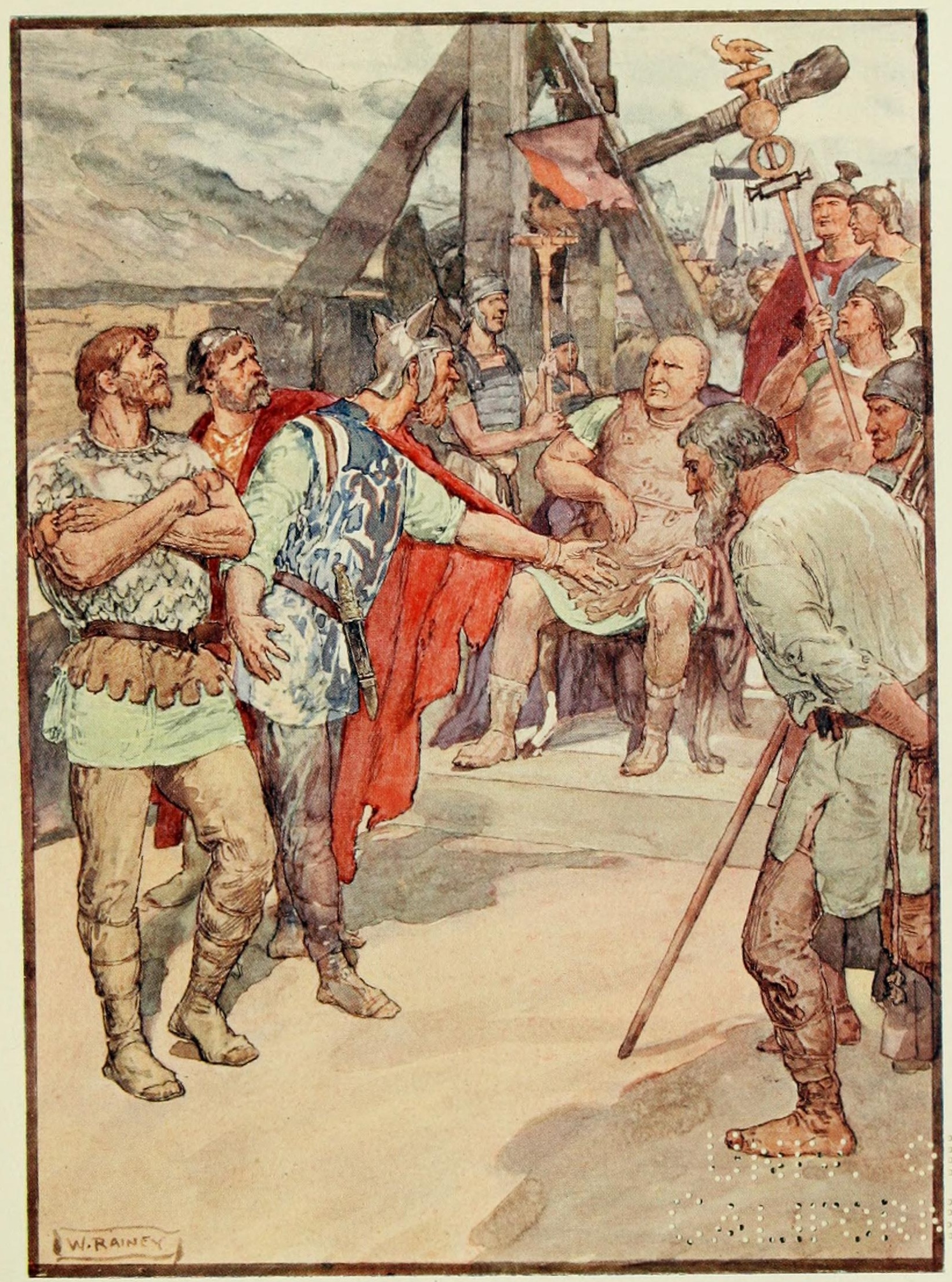|
Galli
A ''gallus'' (pl. ''galli'') was a eunuch priest of the Phrygian goddess Cybele (Magna Mater in Rome) and her consort Attis, whose worship was incorporated into the state religious practices of ancient Rome. Origins Cybele's cult may have originated in Mesopotamia, arriving in Greece around 300 BCE. It originally kept its sacred symbol, a black meteorite, in a temple called the Megalesion in Pessinus in modern Turkey. The earliest surviving references to the galli come from the ''Greek Anthology'', a 10th-century compilation of earlier material, where several epigrams mention or clearly allude to their castrated state. Stephanus Byzantinus (6th century CE) said the name came from King Gallus, while Ovid (43 BC – 17 CE) said it derived from the Gallus river in Phrygia. The same word (''gallus'' singular, ''galli'' plural) was used by the Romans to refer to Celts and to roosters, and the latter especially was a source of puns. Arrival in Rome The cult of Magna Mater arrive ... [...More Info...] [...Related Items...] OR: [Wikipedia] [Google] [Baidu] |
Celts
The Celts (, see pronunciation for different usages) or Celtic peoples () are. "CELTS location: Greater Europe time period: Second millennium B.C.E. to present ancestry: Celtic a collection of Indo-European peoples. "The Celts, an ancient Indo-European people, reached the apogee of their influence and territorial expansion during the 4th century bc, extending across the length of Europe from Britain to Asia Minor."; . " e Celts, were Indo-Europeans, a fact that explains a certain compatibility between Celtic, Roman, and Germanic mythology."; . "The Celts and Germans were two Indo-European groups whose civilizations had some common characteristics."; . "Celts and Germans were of course derived from the same Indo-European stock."; . "Celt, also spelled Kelt, Latin Celta, plural Celtae, a member of an early Indo-European people who from the 2nd millennium bce to the 1st century bce spread over much of Europe."; in Europe and Anatolia, identified by their use of Celtic langua ... [...More Info...] [...Related Items...] OR: [Wikipedia] [Google] [Baidu] |
Cybele
Cybele ( ; Phrygian: ''Matar Kubileya/Kubeleya'' "Kubileya/Kubeleya Mother", perhaps "Mountain Mother"; Lydian ''Kuvava''; el, Κυβέλη ''Kybele'', ''Kybebe'', ''Kybelis'') is an Anatolian mother goddess; she may have a possible forerunner in the earliest neolithic at Çatalhöyük, where statues of plump women, sometimes sitting, accompanied by lionesses, have been found in excavations. Phrygia's only known goddess, she was probably its national deity. Greek colonists in Asia Minor adopted and adapted her Phrygian cult and spread it to mainland Greece and to the more distant Magna Graeca, western Greek colonies around the 6th century BC. In Ancient Greece , Greece, Cybele met with a mixed reception. She became partially assimilated to aspects of the Earth-goddess Gaia (mythology) , Gaia, of her possibly Minoan civilization , Minoan equivalent Rhea (mythology) , Rhea, and of the harvest–mother goddess Demeter. Some city-states, notably Athens, evoked her as a pro ... [...More Info...] [...Related Items...] OR: [Wikipedia] [Google] [Baidu] |
State Of Rome
In modern historiography, ancient Rome refers to Roman civilisation from the founding of the city of Rome in the 8th century BC to the collapse of the Western Roman Empire in the 5th century AD. It encompasses the Roman Kingdom (753–509 BC), Roman Republic (509–27 BC) and Roman Empire (27 BC–476 AD) until the fall of the western empire. Ancient Rome began as an Italic settlement, traditionally dated to 753 BC, beside the River Tiber in the Italian Peninsula. The settlement grew into the city and polity of Rome, and came to control its neighbours through a combination of treaties and military strength. It eventually dominated the Italian Peninsula, assimilated the Greek culture of southern Italy (Magna Grecia) and the Etruscan culture and acquired an Empire that took in much of Europe and the lands and peoples surrounding the Mediterranean Sea. It was among the largest empires in the ancient world, with an estimated 50 to 90 million inhabitants, roughly 20% of t ... [...More Info...] [...Related Items...] OR: [Wikipedia] [Google] [Baidu] |
Glossary Of Ancient Roman Religion
The vocabulary of ancient Roman religion was highly specialized. Its study affords important information about the religion, traditions and beliefs of the ancient Romans. This legacy is conspicuous in European cultural history in its influence on later juridical and religious vocabulary in Europe, particularly of the Western Church. This glossary provides explanations of concepts as they were expressed in Latin pertaining to religious practices and beliefs, with links to articles on major topics such as priesthoods, forms of divination, and rituals. For theonyms, or the names and epithets of gods, see List of Roman deities. For public religious holidays, see Roman festivals. For temples see the List of Ancient Roman temples. Individual landmarks of religious topography in ancient Rome are not included in this list; see Roman temple. __NOTOC__ Glossary A abominari The verb ''abominari'' ("to avert an omen", from ''ab-'', "away, off," and ''ominari'', "to pronounce on an ome ... [...More Info...] [...Related Items...] OR: [Wikipedia] [Google] [Baidu] |
Claudius
Tiberius Claudius Caesar Augustus Germanicus (; 1 August 10 BC – 13 October AD 54) was the fourth Roman emperor, ruling from AD 41 to 54. A member of the Julio-Claudian dynasty, Claudius was born to Nero Claudius Drusus, Drusus and Antonia Minor at Lugdunum in Roman Gaul, where his father was stationed as a military legate. He was the first Roman emperor to be born outside Italia (Roman Empire), Italy. Nonetheless, Claudius was an Italian of Sabine origins. As he had a limp and slight deafness due to sickness at a young age, he was ostracized by his family and was excluded from public office until his Roman consul, consulship (which was shared with his nephew, Caligula, in 37). Claudius's infirmity probably saved him from the fate of many other nobles during the purges throughout the reigns of Tiberius and Caligula, as potential enemies did not see him as a serious threat. His survival led to him being declared emperor by the Praetorian Guard after Caligula's a ... [...More Info...] [...Related Items...] OR: [Wikipedia] [Google] [Baidu] |
Religion In Ancient Rome
Religion in ancient Rome consisted of varying imperial and provincial religious practices, which were followed both by the people of Rome as well as those who were brought under its rule. The Romans thought of themselves as highly religious, and attributed their success as a world power to their collective piety ''(pietas)'' in maintaining Pax deorum, good relations with the gods. Their Polytheism, polytheistic religion is known for having honored List of Roman deities, many deities. The presence of Magna Graecia, Greeks on the Italian peninsula from the beginning of the historical period influenced Culture of ancient Rome, Roman culture, introducing some religious practices that became fundamental, such as the ''Cult (religious practice), cultus'' of Apollo. The Romans looked for common ground between their major gods and those of the Greeks (''interpretatio graeca''), adapting Greek mythology, Greek myths and iconography for Latin literature and Roman art, as the Etruscans h ... [...More Info...] [...Related Items...] OR: [Wikipedia] [Google] [Baidu] |
Rooster
The chicken (''Gallus gallus domesticus'') is a domesticated junglefowl species, with attributes of wild species such as the grey and the Ceylon junglefowl that are originally from Southeastern Asia. Rooster or cock is a term for an adult male bird, and a younger male may be called a cockerel. A male that has been castrated is a capon. An adult female bird is called a hen and a sexually immature female is called a pullet. Humans now keep chickens primarily as a source of food (consuming both their meat and eggs) and as pets. Traditionally they were also bred for cockfighting, which is still practiced in some places. Chickens are one of the most common and widespread domestic animals, with a total population of 23.7 billion , up from more than 19 billion in 2011. There are more chickens in the world than any other bird. There are numerous cultural references to chickens – in myth, folklore and religion, and in language and literature. Genetic studies have pointed to mult ... [...More Info...] [...Related Items...] OR: [Wikipedia] [Google] [Baidu] |
Megalesia
The Megalesia, Megalensia, or Megalenses Ludi, was a festival celebrated in Ancient Rome from April 4 to April 10, in honour of Cybele, known to Romans as ''Magna Mater'' (Great Mother). The name of the festival derives from Greek ''Megale'' (μϵγάλη), meaning "Great". ''Ludi'' were the games or entertainments associated with religious festivals. Background Cybele's cult image was brought to Rome from Pessinus in 204 BC, along with the goddess's Gallae priestesses. As the "Great Mother of the Gods" and a purported ancestral Trojan goddess of Rome's ruling patrician caste, she was recruited to act on Rome's behalf in the war against Carthage. Her arrival was solemnized with a magnificent procession, sacred feasts ('' lectisternia''), games, and offerings to her at the temple of Victory on the Palatine Hill, where her image was temporarily housed. In 203 Cybele was promised a temple of her own. Games in her honour were celebrated in 193. Regular annual celebration of the Mega ... [...More Info...] [...Related Items...] OR: [Wikipedia] [Google] [Baidu] |
Attis
Attis (; grc-gre, Ἄττις, also , , ) was the consort of Cybele, in Phrygian and Greek mythology. His priests were eunuchs, the ''Galli'', as explained by origin myths pertaining to Attis castrating himself. Attis was also a Phrygian vegetation deity. His self-mutilation, death, and resurrection represents the fruits of the earth, which die in winter only to rise again in the spring. According to Ovid's ''Metamorphoses'', Attis transformed himself into a pine tree. No connection to the god Atys Nineteenth century scholarship wrongly identified the god ''Attis'' with the similar-sounding name of the god ''Atys''. The ''name'' "Atys" is often seen in ancient Aegean cultures; it was mentioned by Herodotus, however Herodotus was describing Atys, the son of Croesus, a human in a historical account. The 19th century conflation of the man Atys's name with the mythology of the god he was presumably named after, "Atys the sun god, slain by the boar's tusk of winter", ... [...More Info...] [...Related Items...] OR: [Wikipedia] [Google] [Baidu] |
Pessinus
Pessinus ( el, Πεσσινούς or Πισσινούς) was an Ancient city and archbishopric in Asia Minor, a geographical area roughly covering modern Anatolia (Asian Turkey). The site of the city is now the modern Turkish village of Ballıhisar, in a tributary valley of the Sakarya River on the high Anatolian plateau at 950 m above sea level, 13 km from the small town of Sivrihisar. Pessinus remains a Catholic (formerly double) titular see. Description The temple area As yet, the temple area, which was excavated between 1967 and 1972, is the only well-studied area of Pessinus. It was studied thoroughly by M. Waelkens (current director of Sagalassos excavations) in the 1980s and between 2006 and 2012 by Verlinde (Ghent University), who built on the findings of the former to analyze and reconstruct the architecture of the Corinthian peripteral temple, of which only the massive foundations remain. Investigations led to several observations, such as the Tiberian da ... [...More Info...] [...Related Items...] OR: [Wikipedia] [Google] [Baidu] |
Eunuch
A eunuch ( ) is a male who has been castrated. Throughout history, castration often served a specific social function. The earliest records for intentional castration to produce eunuchs are from the Sumerian city of Lagash in the 2nd millennium BCE. Over the millennia since, they have performed a wide variety of functions in many different cultures: courtiers or equivalent domestics, for espionage or clandestine operations, castrato singers, concubines, or sexual partners, religious specialists, soldiers, royal guards, government officials, and guardians of women or harem servants. Eunuchs would usually be servants or slaves who had been castrated to make them less threatening servants of a royal court where physical access to the ruler could wield great influence. Seemingly lowly domestic functions—such as making the ruler's bed, bathing him, cutting his hair, carrying him in his litter, or even relaying messages—could, in theory, give a eunuch "the ruler's ear" and impa ... [...More Info...] [...Related Items...] OR: [Wikipedia] [Google] [Baidu] |
Gaius Marius
Gaius Marius (; – 13 January 86 BC) was a Roman general and statesman. Victor of the Cimbric and Jugurthine wars, he held the office of consul an unprecedented seven times during his career. He was also noted for his important reforms of Roman armies. He set the precedent for the shift from the militia levies of the middle Republic to the professional soldiery of the late Republic; he also improved the '' pilum'', a javelin, and made large-scale changes to the logistical structure of the Roman army. Rising from a well-off provincial Italian family in Arpinum, Marius acquired his initial military experience serving with Scipio Aemilianus at the Siege of Numantia in 134 BC. He won election as tribune of the plebs in 119 BC and passed a law limiting aristocratic interference in elections. Barely elected praetor in 115 BC, he next became the governor of Further Spain where he campaigned against bandits. On his return from Spain he married Julia, the aunt of J ... [...More Info...] [...Related Items...] OR: [Wikipedia] [Google] [Baidu] |











